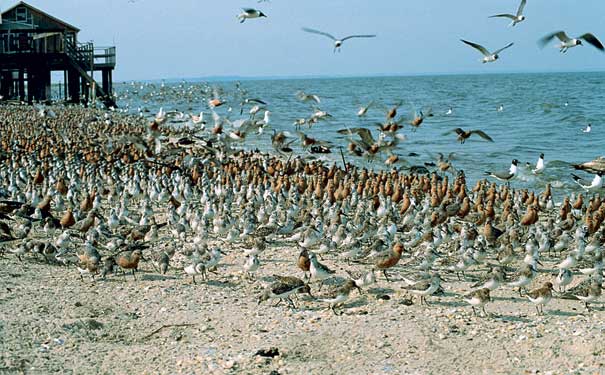For many years, no one knew what these arthropods used their sense of sight for. But various experiments have revealed that horseshoe crabs use their compound eyes to find mates during their hectic breeding season.
In addition to their two compound eyes, horseshoe crabs have eight eyes in various spots on their body. At the front of the carapace, there are three small eyes that detect ultraviolet radiation from the sun and light reflected from the moon, and these may track moon phases for their spawning cycle, which peaks at
new and full moons. Behind each of the two large compound eyes is a rudimentary eye that may provide light information during larval and embryonic stages. Near the mouth on the underside of the body are two ventral eyes, which may help the animals orient themselves while swimming, as horseshoe crabs are often observed swimming upside down. The final “eye” is a row of light sensors located on the tail. Scientists suspect that these receptors may be used to detect moonlight.
Despite their longevity, there is critical concern among biologists over the future of the species. Over-harvesting on the East Coast and habitat loss in Japan have greatly decreased their numbers. Current research focuses on finding ways to conserve these most resilient of threatened animals.
Read more: For the full article, see Science Illustrated magazine, July/August 2010 Australian edition.







